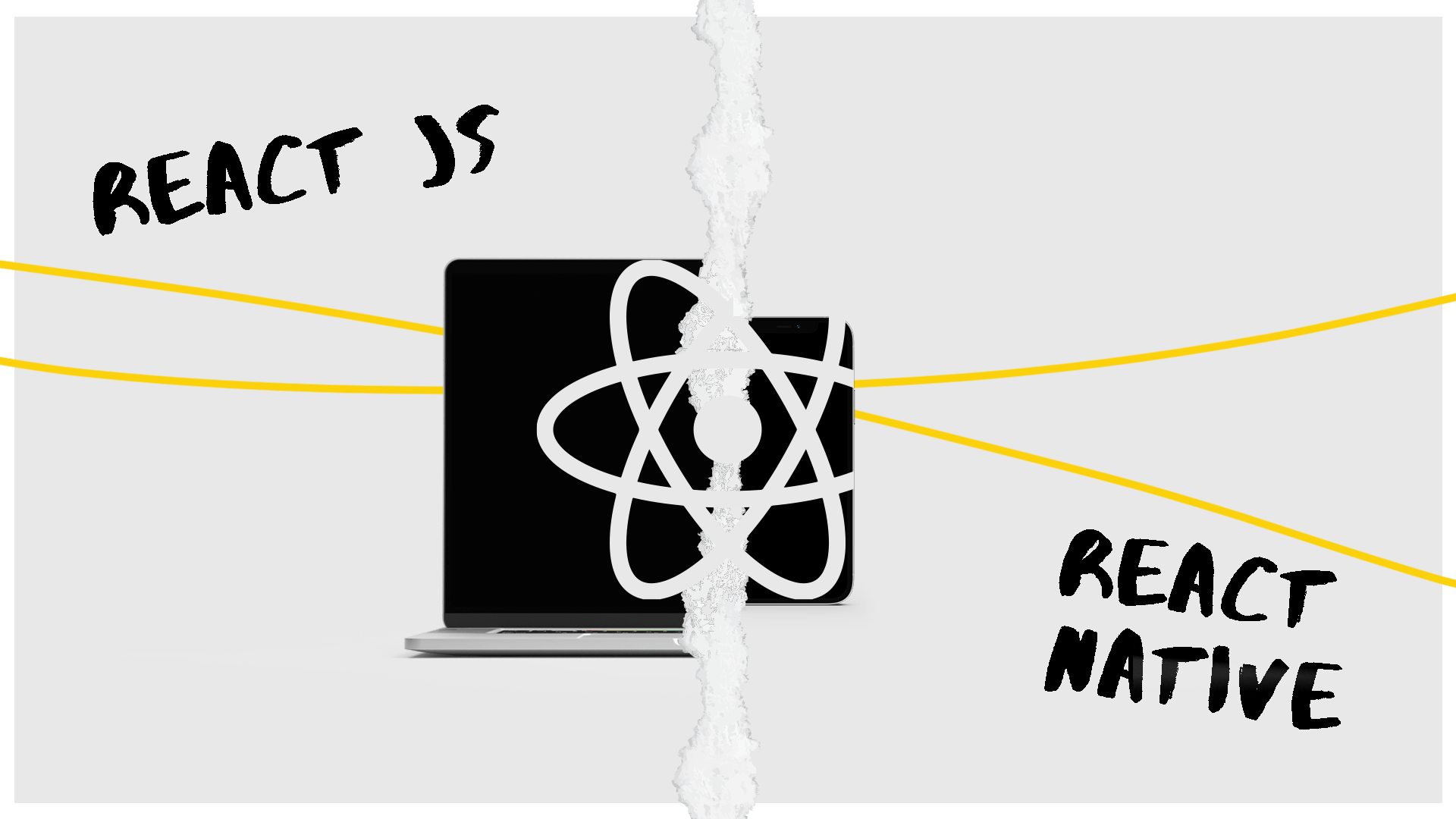If you’re building an app in 2022, there are two immensely popular products to consider using – Reactjs and React Native. As you might expect, these two originated from the same stable, namely Facebook, with Reactjs being the 2011 brainchild of Facebook developer Jordan Valke (it was originally called FaxJs).
Reactjs is a Javascript library of components that can be assembled to create a web app. In 2013, Facebook made its app development library open-source, and its popularity soared. In 2015, in reaction to the ever-growing popularity of Facebook on mobile devices, the company created React Native, a development framework for native apps for both iOs and Android, as well as other IoT devices. React Native too is open-source.
In 2022, both development platforms are immensely popular. In Stack Overflow’s 2021 developer survey, Reactjs had overtaken the likes of jQuery, Angular, and Vue.js as the world’s number 1 web development framework, used by over 40% of respondents. React Native’s developer community is ever-growing, so although it’s the comparative newcomer, it’s increasingly well-supported.
This article will look at the big differences between Reactjs and React Native, their comparative advantages and disadvantages, and each product’s best use case scenarios.
Here's what we're going to talk about
What is React (Reactjs)?
ReactJs, sometimes referred to as React, is a Javascript library of UI components that can be plugged together to build a web-based app. It has a huge user base and is entirely open-source. One of the big advantages of ReactJs is the speed with which you can create a workable web-based app. That is because most of the components you’ll need have been pre-assembled by other developers. In other words, there’s no need for you to reinvent the wheel!
ReactJs builds exceptionally fast web apps because it uses declarative views. This means that the sections of a page that change because of the user’s interactions are refreshed, leading to a faster page display rate (and an easier development process). Later in this article, we’ll look more closely at that and ReactJs’ Virtual DOM environment.
ReactJs was created when Facebook was primarily a website rather than the multi-platform entity it is today (requiring its products to be translated into mobile compatible versions). However, suppose you’re creating a primarily web-based app or complex interactive site. In that case, ReactJs is a fantastic way to work.
What is React Native?
In contrast with ReactJs, React Native is primarily used by developers working on mobile apps for both Apple and Android devices. Its biggest advantage is that it uses an innovative bridge to communicate between its core JavaScript code and the native coding of iOs or Android. It does this through both Java and C++ translation over the bridge.
This means that developers simply write one set of code for their app. That code will automatically translate to both platforms, eradicating the need for separate development teams to code platform-specific versions of the same app. This can save a great deal of time and money.
React Native can also be used to build web versions of its apps, but it is primarily designed for mobile app creation.
ReactJs vs React Native: The main differences
Before deciding what system to use, you need to know if your app will function primarily on the web or on mobile/IoT devices. This will help clarify whether ReactJs or React Native is best suited for your purposes.
Here are the main differences between the two platforms:
Environment
React Native is a full development framework, which means you don’t necessarily have to work outside its parameters (except for key APIs or emulation environments). ReactJs is a JavaScript library of components, so you’ll need other tools to build your site.
Platform compatibility
As we discovered above, React Native can create apps for both mobile OS and web apps. In contrast, ReactJs is very much a specialist JavaScript component library for app developers.
Coding
ReactJs uses JavaScript and underlying HTML5, whereas React Native will write code for the relevant devices’ native script (e.g., Swift/Obj C for iOs or Java for Android).
Styling
ReactJs uses HTML5 and CSS stylesheets for the UI display. React Native lets you write JavaScript stylesheet components that it then translates to their native equivalents.
Learning curve
You’re likely to pick up React Native quickly if you’ve already used ReactJs. Still, both rely upon an understanding of JavaScript. You don’t have to know HTML5 for React Native, however. Both have supportive developer communities.
Key Features of ReactJs
ReactJs excels in several key areas:
Use of a Virtual DOM
When changes are made to code, ReactJs will only re-render the branch which has been altered because it is constantly monitoring differences between the virtual DOM that developers work on and the underlying real DOM where it will make the approved changes. The speed savings this generates should not be underestimated.
SEO Performance
Support for server-side rendering speeds up the UI display as well as providing information for Google’s bots to identify the underlying HTML and evaluate your site with ease. This improves the SEO rankings of any site built in this way. However, a word of caution: sites optimized in this way take considerably longer to create.
Huge Component Library
With nine years of open-source development behind it, ReactJs’s library of components is second to none, allowing developers to put together a first iteration in record time. These components are further subdivided into libraries for specific purposes, so you can home in on exactly what you need.
Animation
ReactJs uses CSS for animation, which you can code alongside other stylistic elements without resorting to an animation-specific API integration.
Key Features of React Native
The headline benefits of React Native are as follows:
Cross-Platform Compatibility
The main advantage to using React Native is that you code once and your app should function across all mobile platforms. You can also create desktop versions with React Native for Web.
Hot Reloading
When you’re making tiny tweaks to an app it can be immensely frustrating having to refresh the whole thing to see the effect. With hot reloading, you can toggle immediate changes off and on in your editor so that you can use a trial-and-error method to get your UI just right.
Developer Tools
React Native comes with a suite of developer tools ready to use, including debuggers, live reloading, and code inspectors. You don’t need to use any third-party plug-ins to get your app just right.
Support and Networks
React Native may have finally been overtaken as the most popular cross-platform development app (Flutter stole its crown for the first time in 2021, according to Statista). However, it still enjoys a 38% market share and a huge support network of developers. Should you run into trouble, you’ll find someone to help before too long.
Why Use ReactJs for your Business?
Given all the above, you should choose ReactJs for your app development if the following criteria apply:
- Your primary aim is to create a web-based app or interactive website.
- SEO is of maximum importance.
- Your developers are experienced in JavaScript, HTML5 and CSS.
- You want your app to be up and running as quickly as possible.
- You want to be able to swap modular components in and out with ease.
Examples of Companies using ReactJs for their web apps: Facebook, Netflix, Airbnb, Reddit, PayPal
Why Use React Native for your Business?
Companies building apps would be best to choose React Native if these apply:
- You want to create mobile apps which work on both iOS and Android devices.
- You care about speed and cost-saving in the development process.
- Your apps are not primarily designed to handle large volumes of data.
- Your developers are happy to use APIs for animation and JavaScript stylesheets for the UI.
- Any web versions of your app will be secondary to their mobile counterparts.
Examples of Companies using React Native for their mobile apps: Instagram, Coinbase, Uber Eats, Pinterest.
Limitations of ReactJs
You can’t use ReactJs alone to build a mobile app. Therefore, it’s probably not the best tool if you suspect that your website-based application might also suit a mobile UI approach.
Coinbase, for instance, could easily have built a web app for their crypto trading platform, but they knew their clientele was highly mobile and tech-savvy. Therefore it made sense to go Native instead.
Should you want to adapt your ReactJs-created app for Android or iOS, you’ll largely have to start from scratch.
Another problem could be the speed of change of ReactJs. As an incredibly popular open-source product, many upgrades and revisions are taking place, not all of which are helpfully documented.
Ensuring you have a suitably secure and up-to-date version could require constant monitoring. It’s therefore not the best choice when creating FinTech or banking apps.
Limitations of React Native
As we’ve seen, React Native allows you to simultaneously create multiple versions of your app which automatically work across different platforms.
However, it doesn’t quite function straight out of the box. In order to run it on a Windows system, you first must download and install NVM and node.js to run JavaScript, then Java SDK8, React Native itself, and some other tools you’ll need.
Once you’ve done all that, you’ll find React Native doesn’t have as many modules as its older brother, ReactJs. If your developer can’t locate what they need, they may still have to create it from scratch.
Additionally, some of the included features, such as the onboard animation API, aren’t ideal. Lastly, learning and navigating React Native isn’t as easy as one might hope.
Which is Better - ReactJs or React Native?
That’s a bit like asking whether apples or oranges are better. They are different tools with various use cases. In short, though, if you need a fast-loading web-based app, ReactJs should be your best choice, whereas if you have an app that will work mostly on smartphones, React Native is the way to go.
ReactJs has been around longer, so it has a bigger library of components and support network. There are Github folders available for both ReactJs and React Native, fortunately, as well as numerous developer forums where you can source free advice if you’re stuck in your project, including Stack Overflow, Reddit, and Hashnode.
What is the Future of React Native and ReactJs?
These Facebook-originated app creators aren’t the only game in time. Strong competition is being mounted by Flutter and NativeScript, to name a few.
It also seems likely that Facebook (under its new parent company Meta) might mix aspects of both React variants. It’s possible they’ll create an all-in-one solution that includes more support for VR and augmented reality apps since that’s the direction the company is heading. They already have React VR and React 360 under the same brand umbrella, so it’s likely this trend will continue.
Whatever the future holds, it seems likely that the React name will be here for many years to come, continuing to create award-winning apps for some of the world’s biggest brands.
Get in touch with a team of ReactJs and React Native experts
Having worked with international clients in more than 15 industries such as fintech, healthcare, infrastructure, greentech, social, blockchain and many more, we got a team of 150+ skilled engineers and kind people ready to assist your throughout the entire end-to-end development process.
Should you look for a team to play both the consultant and implementor role, don’t hesitate to reach out. We will shortly schedule a meeting with you to learn more about your idea, the vision you have and challenges that you want to overcome in developing your web or mobile app.






